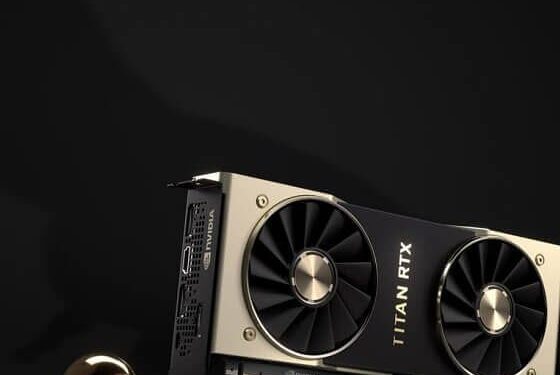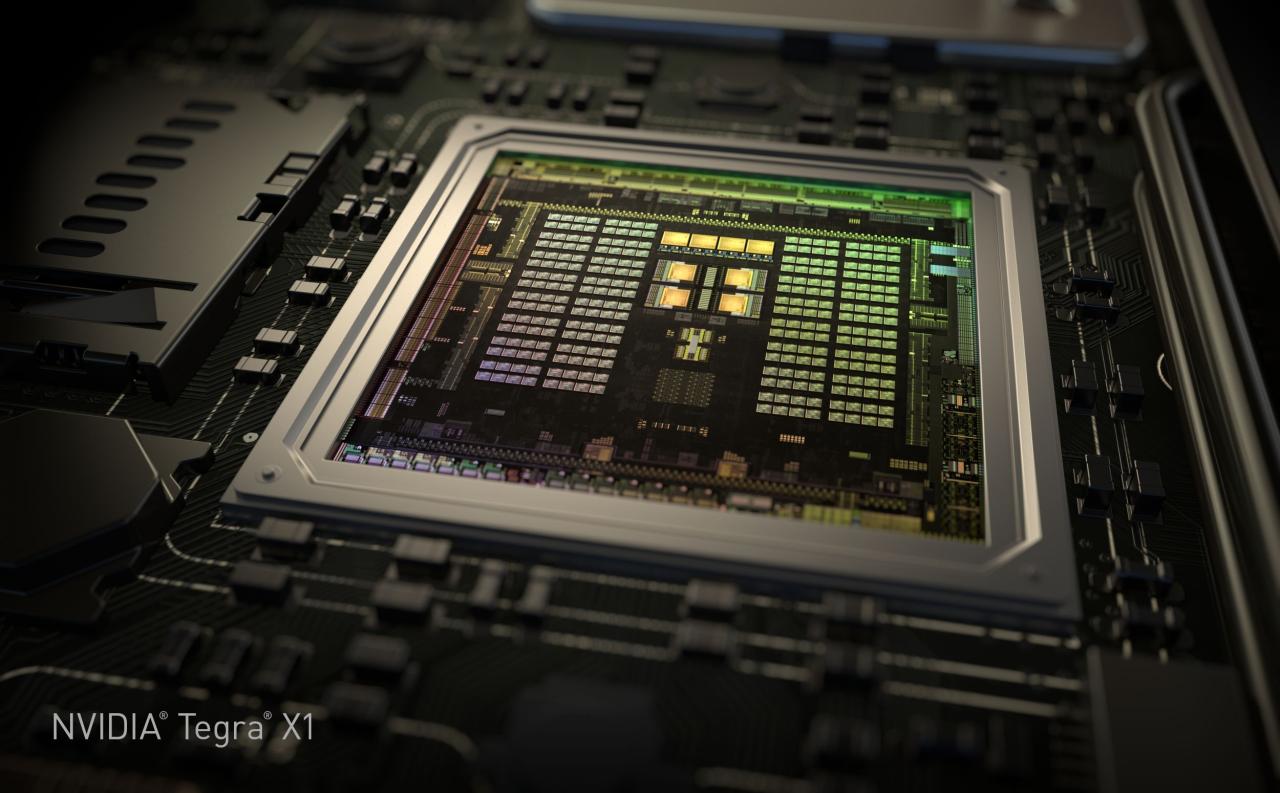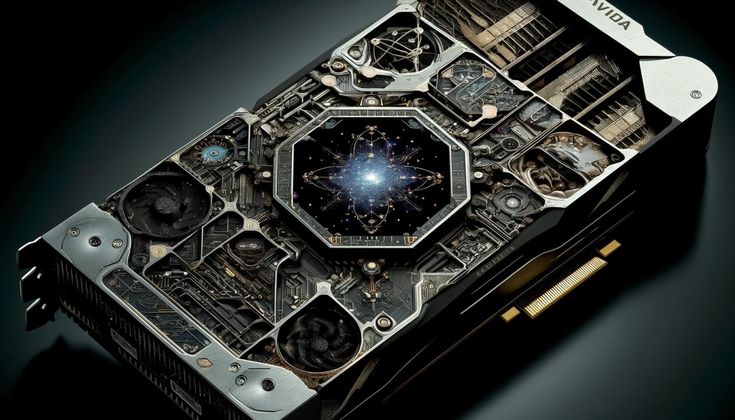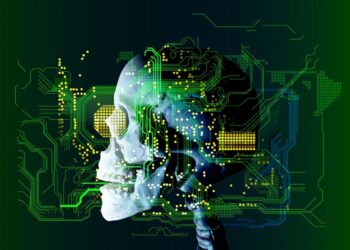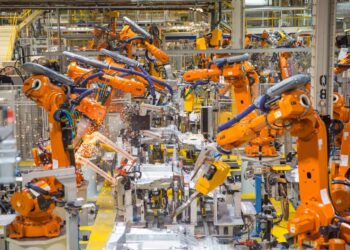In today’s rapidly evolving technological landscape, artificial intelligence (AI) is at the forefront of innovation. Leading the charge in AI hardware advancements, NVIDIA has once again captured the industry’s attention by unveiling its next-generation AI chips. These state-of-the-art processors are designed to accelerate machine learning workloads, enhance data center performance, and power breakthrough applications in various sectors. This article delves into the technology behind NVIDIA’s latest debut, the potential impact on the global market, and the opportunities these chips present for industries ranging from automotive to healthcare.
The importance of robust AI hardware cannot be understated. As AI applications become more integrated into everyday life—from autonomous vehicles to real-time language translation—the demand for efficient, high-performance processing units is soaring. NVIDIA’s new chips are engineered to meet these growing needs, offering improved computational speed, enhanced energy efficiency, and advanced features that promise to redefine what is possible in AI and machine learning.
NVIDIA has long been recognized as a pioneer in graphics processing and parallel computing. Initially celebrated for its contributions to gaming and visual computing, the company quickly diversified its portfolio to encompass artificial intelligence and data center solutions. Over the years, NVIDIA’s GPUs have become the backbone of many AI applications, powering breakthroughs in deep learning, computer vision, and natural language processing.
Milestones in NVIDIA’s AI Journey
A. Early GPU Innovations:
- NVIDIA revolutionized computer graphics with its high-performance GPUs, initially designed to handle complex visual computations in gaming and professional applications.
B. Introduction of CUDA:
- The launch of CUDA (Compute Unified Device Architecture) enabled developers to harness the parallel processing power of GPUs for general-purpose computing, laying the groundwork for accelerated AI research.
C. Expansion into AI Research:
- As machine learning gained momentum, NVIDIA’s hardware became the preferred choice for training neural networks, leading to partnerships with research institutions and tech giants.
D. Data Center Dominance:
- In recent years, NVIDIA has successfully penetrated the data center market by offering solutions that cater to the high-performance requirements of cloud computing and AI workloads.
E. Next-Gen AI Chips:
- With the release of its latest generation of AI chips, NVIDIA continues to push the boundaries of computational performance and energy efficiency, reinforcing its leadership in the AI industry.
The Breakthrough: Next-Generation AI Chips
NVIDIA’s new AI chips represent a significant leap forward in processing technology. Designed to meet the rigorous demands of modern AI applications, these processors boast a range of innovative features that set them apart from their predecessors.
Key Technological Advancements
The new chips are built on a cutting-edge architecture that optimizes both performance and power consumption. Among the standout features are:
A. Enhanced Processing Cores:
- The chips incorporate a higher number of CUDA cores, which dramatically increase parallel processing capabilities. This enhancement translates into faster computations and more efficient data processing for complex AI algorithms.
B. Advanced Memory Management:
- With improved memory bandwidth and caching techniques, the chips ensure that data flows smoothly between processing units and memory modules. This minimizes bottlenecks, particularly in large-scale machine learning models.
C. Next-Level Tensor Cores:
- Designed specifically for deep learning operations, the tensor cores in these chips provide accelerated matrix computations, a critical component in training and inference tasks. This feature significantly boosts performance in AI workloads.
D. Energy Efficiency:
- One of the most impressive aspects of the new AI chips is their improved power efficiency. By optimizing power consumption without sacrificing performance, NVIDIA ensures that data centers and AI applications can run more sustainably and cost-effectively.
E. Integrated AI Software Stack:
- Alongside the hardware, NVIDIA offers a comprehensive software suite that simplifies the deployment of AI models. This integration allows developers to easily scale applications and leverage advanced AI capabilities without extensive modifications to existing code.
Market Impact and Industry Applications
The introduction of NVIDIA’s next-generation AI chips is poised to have a profound impact across various sectors. Their ability to process data at unprecedented speeds opens up a multitude of opportunities for businesses and developers.
Transforming Data Centers and Cloud Computing
Data centers are the nerve centers of today’s digital economy. As cloud computing platforms become more sophisticated, the need for powerful and efficient processing units is greater than ever. NVIDIA’s new chips offer:
A. Scalable Performance:
- Data centers can now handle a greater volume of AI tasks concurrently, reducing latency and improving overall system responsiveness.
B. Reduced Operational Costs:
- Enhanced energy efficiency means lower power consumption, translating into reduced operational costs—a critical factor for large-scale cloud providers.
C. Optimized Workloads:
- With specialized cores for AI and deep learning, these chips ensure that workloads are processed faster and more reliably, leading to better performance metrics for cloud services.
Revolutionizing Autonomous Vehicles
The automotive industry is rapidly evolving with the advent of self-driving cars and smart transportation systems. NVIDIA’s advanced AI chips are integral to this transformation. Key contributions include:
A. Real-Time Data Processing:
- Autonomous vehicles rely on real-time data processing from sensors, cameras, and radars. The new chips’ ability to swiftly analyze large volumes of data is crucial for safe and efficient navigation.
B. Enhanced Safety Features:
- By enabling faster decision-making, these chips contribute to improved safety systems, helping vehicles to react promptly to changing road conditions.
C. Scalable Solutions:
- The flexibility and power of the chips allow manufacturers to scale their autonomous driving solutions, integrating advanced features such as predictive maintenance and adaptive learning.
Advancements in Healthcare Technology
The healthcare industry is embracing AI for diagnostics, treatment planning, and research. NVIDIA’s AI chips are making a significant impact by:
A. Accelerating Medical Imaging:
- AI-powered imaging systems benefit from rapid processing capabilities, leading to quicker and more accurate diagnostics in radiology and pathology.
B. Enhancing Drug Discovery:
- The computational power provided by these chips accelerates the simulation of molecular interactions, thereby speeding up the drug discovery process.
C. Personalized Medicine:
- Advanced AI models can analyze patient data to create personalized treatment plans, improving patient outcomes and reducing the time required for recovery.
Impact on Scientific Research
In the realm of scientific research, the capabilities of NVIDIA’s AI chips are being leveraged to tackle some of the most complex challenges in fields such as genomics, climate modeling, and astrophysics.
A. Big Data Analysis:
- Research institutions are now able to analyze vast datasets more efficiently, leading to breakthroughs in understanding complex phenomena.
B. Simulation and Modeling:
- High-fidelity simulations powered by these chips are enabling scientists to model everything from weather patterns to particle physics, opening new avenues for discovery.
C. Accelerated Research Cycles:
- Faster computation means that research projects can progress more rapidly, reducing the time between hypothesis and discovery.
Technical Deep Dive
To truly appreciate the innovation behind NVIDIA’s next-generation AI chips, it is essential to understand the technical aspects that differentiate them from earlier models. This section provides a detailed analysis of the chip architecture, performance benchmarks, and design improvements.
A. Architectural Enhancements
The foundation of NVIDIA’s new AI chips is a reimagined architecture that maximizes efficiency and performance. The design incorporates several key elements:
-
Increased CUDA Cores: The chip features a significant boost in CUDA cores, which are essential for parallel processing. This increase allows for more simultaneous computations, greatly benefiting AI and deep learning tasks.
-
Optimized Data Paths: By redesigning data pathways, NVIDIA has reduced latency and improved data throughput, ensuring that large datasets are handled with minimal delay.
-
Enhanced Tensor Core Functionality: The tensor cores have been refined to provide even higher throughput for matrix operations. This is particularly important for training deep neural networks, where massive amounts of matrix multiplication occur.
B. Performance Benchmarks
Independent testing has demonstrated that the new chips outperform previous models by a considerable margin. Key performance metrics include:
A. Speed Improvements:
- Benchmarks indicate a significant increase in processing speed, with some applications experiencing up to a 50% reduction in computation time.
B. Efficiency Gains:
- Despite the speed improvements, the chips maintain a lower power consumption rate, making them an ideal choice for both data centers and edge devices.
C. Scalability:
- The architecture is designed to be scalable, allowing for easy integration into existing systems and future upgrades without major overhauls.
C. Design Innovations
The physical design of the chips reflects NVIDIA’s commitment to pushing the boundaries of semiconductor technology. Notable design innovations include:
A. Advanced Lithography Techniques:
- Utilizing state-of-the-art lithography, NVIDIA has been able to pack more transistors into a smaller chip footprint, resulting in higher performance without increasing size.
B. Thermal Management:
- Effective thermal solutions ensure that the chips operate at optimal temperatures even under heavy loads, preventing overheating and prolonging lifespan.
C. Modular Architecture:
- The modular design allows for components to be updated or replaced as technology advances, providing a future-proof solution that can adapt to emerging requirements.
The Competitive Landscape
NVIDIA’s unveiling of its next-generation AI chips comes at a time when competition in the semiconductor industry is fierce. Major players such as AMD and Intel are also investing heavily in AI technology, which raises the bar for performance and innovation across the board.
A. Comparison with AMD
AMD has made significant strides in GPU development, with its latest products also targeting the AI and data center markets. However, NVIDIA’s focus on specialized AI cores and a comprehensive software ecosystem gives it a competitive edge. Key differentiators include:
A. AI-Specific Hardware:
- NVIDIA’s chips are specifically optimized for AI workloads, whereas AMD’s designs often prioritize general-purpose computing alongside gaming performance.
B. Software Integration:
- The seamless integration of NVIDIA’s AI software stack with its hardware offerings provides a more user-friendly and efficient development environment for AI applications.
B. Intel’s Position
Intel, traditionally known for its central processing units (CPUs), has recently pivoted towards AI acceleration with new chip designs and acquisitions. While Intel’s entry into the AI chip market is promising, it faces challenges in matching the dedicated GPU-based architecture that NVIDIA has perfected over the years.
A. Legacy Infrastructure:
- Intel’s extensive experience in CPU manufacturing gives it a robust foundation; however, adapting its technology to meet the specialized demands of AI processing remains a significant hurdle.
B. Investment in AI Research:
- Intel’s substantial investments in AI research and development signal that the company is determined to catch up. The coming years will likely see increased competition, driving further innovation.
Developer Ecosystem and Industry Adoption
One of NVIDIA’s greatest strengths is its thriving developer ecosystem. The company’s commitment to providing robust tools, libraries, and frameworks has fostered a community of innovators who are continuously pushing the boundaries of what AI can achieve.
A. NVIDIA’s Software Suite
NVIDIA’s comprehensive software ecosystem, which includes platforms like CUDA, cuDNN, and TensorRT, is a critical component of its hardware success. These tools enable developers to:
A. Accelerate AI Development:
- With optimized libraries and APIs, developers can significantly reduce the time required to train and deploy AI models.
B. Simplify Integration:
- The compatibility of NVIDIA’s software with major machine learning frameworks such as TensorFlow and PyTorch facilitates seamless integration and broad adoption across industries.
C. Access Cutting-Edge Research:
- NVIDIA regularly collaborates with academic institutions and research labs, ensuring that its tools remain at the forefront of AI innovation.
B. Industry Adoption and Success Stories
Numerous industries have already begun to reap the benefits of NVIDIA’s advanced AI chips. Here are some examples of successful implementation:
A. Automotive Industry:
- Major automotive manufacturers are integrating NVIDIA’s AI technology into autonomous driving systems, enhancing real-time data processing and decision-making capabilities.
B. Healthcare Solutions:
- AI-powered diagnostic tools that leverage NVIDIA’s hardware are revolutionizing medical imaging, leading to faster and more accurate disease detection.
C. Financial Services:
- Banks and financial institutions are employing advanced AI algorithms on NVIDIA’s chips to improve fraud detection and optimize trading strategies.
D. Entertainment and Media:
- In the realm of digital content creation, NVIDIA’s AI chips enable real-time rendering, video editing, and augmented reality experiences that are both immersive and efficient.
Challenges and Considerations
While NVIDIA’s next-generation AI chips present numerous advantages, the adoption of any new technology comes with its own set of challenges. It is essential for businesses and developers to be aware of potential obstacles and plan accordingly.
A. Supply Chain and Manufacturing
The semiconductor industry has faced significant supply chain disruptions in recent years. Challenges include:
A. Component Shortages:
- Global shortages of critical materials and components can affect production timelines and availability.
B. Manufacturing Complexity:
- As chips become more advanced, manufacturing processes become increasingly complex, which may lead to higher costs and potential delays.
C. Quality Control:
- Ensuring consistent quality across large-scale production remains a constant challenge, particularly when integrating cutting-edge technologies.
B. Integration and Compatibility
Adopting new hardware often requires adjustments to existing systems. Companies must consider:
A. System Upgrades:
- Upgrading data centers and infrastructure to accommodate new AI chips may involve significant investment in both time and resources.
B. Software Compatibility:
- Ensuring that current applications and workflows are compatible with the latest hardware is crucial for a smooth transition.
C. Training and Skill Development:
- Teams may require additional training to fully leverage the new capabilities offered by advanced AI chips.
C. Security and Data Privacy
With increased computational power comes heightened responsibility. Advanced AI chips, while powerful, must be integrated with robust security measures:
A. Data Encryption:
- Implementing strong encryption protocols is essential to safeguard sensitive information processed by AI systems.
B. Access Control:
- Strict access control measures must be enforced to prevent unauthorized access to the hardware and associated data.
C. Regulatory Compliance:
- Companies must remain compliant with international data protection regulations when deploying high-performance AI solutions.
Future Prospects and Innovations
Looking ahead, the landscape of AI hardware will continue to evolve. NVIDIA’s latest chip technology is only the beginning of what promises to be an era of unprecedented advancements in artificial intelligence. Future developments may include:
A. Quantum Integration:
- Researchers are exploring ways to integrate quantum computing principles with traditional AI processing, potentially unlocking even greater computational power.
B. Edge Computing Enhancements:
- As IoT devices proliferate, AI chips optimized for edge computing will become critical. These chips can process data locally, reducing latency and bandwidth usage.
C. Improved AI Algorithms:
- The synergy between hardware advancements and evolving AI algorithms will lead to more efficient, accurate, and capable systems that push the boundaries of what machines can achieve.
D. Sustainability Focus:
- Future innovations will likely place a greater emphasis on sustainability. Energy-efficient designs and eco-friendly manufacturing processes will become standard practices in the semiconductor industry.
E. Broader Industry Collaboration:
- The integration of AI technology across different sectors will foster collaboration between tech companies, research institutions, and regulatory bodies, leading to more standardized and secure AI solutions.
Conclusion
NVIDIA’s unveiling of its next-generation AI chips marks a pivotal moment in the evolution of artificial intelligence hardware. With groundbreaking architectural enhancements, improved energy efficiency, and a robust software ecosystem, these chips are set to transform industries ranging from data centers and automotive to healthcare and scientific research. By offering unparalleled performance and scalability, NVIDIA is not only reinforcing its position as a leader in the AI hardware market but also paving the way for future innovations that will further integrate AI into the fabric of everyday life.
As organizations navigate an increasingly digital world, the need for advanced AI processing solutions has never been greater. NVIDIA’s new chips provide a powerful tool for businesses looking to harness the potential of artificial intelligence, optimize operational efficiency, and drive innovation across all sectors. While challenges such as supply chain complexities and integration hurdles remain, the benefits offered by these state-of-the-art processors far outweigh the obstacles, promising a future where AI technology continues to revolutionize every aspect of our lives.
The journey ahead is one of continuous improvement and groundbreaking discoveries. Companies that invest in advanced AI hardware today will be better positioned to meet the demands of tomorrow’s technology landscape. NVIDIA’s next-generation AI chips are not just a product launch—they represent a vision for a smarter, more connected world, where intelligent machines help solve some of the most complex problems of our time.

